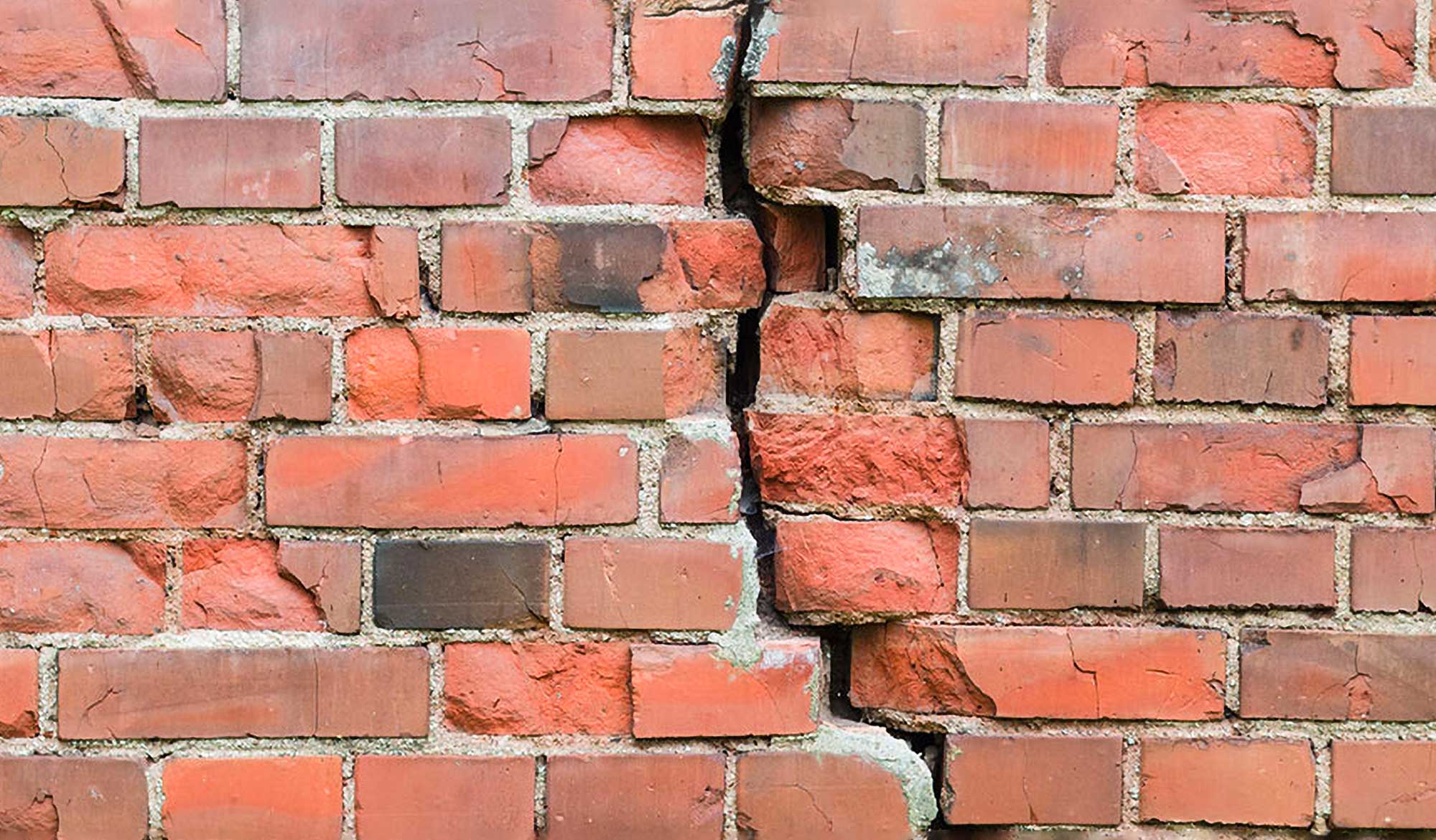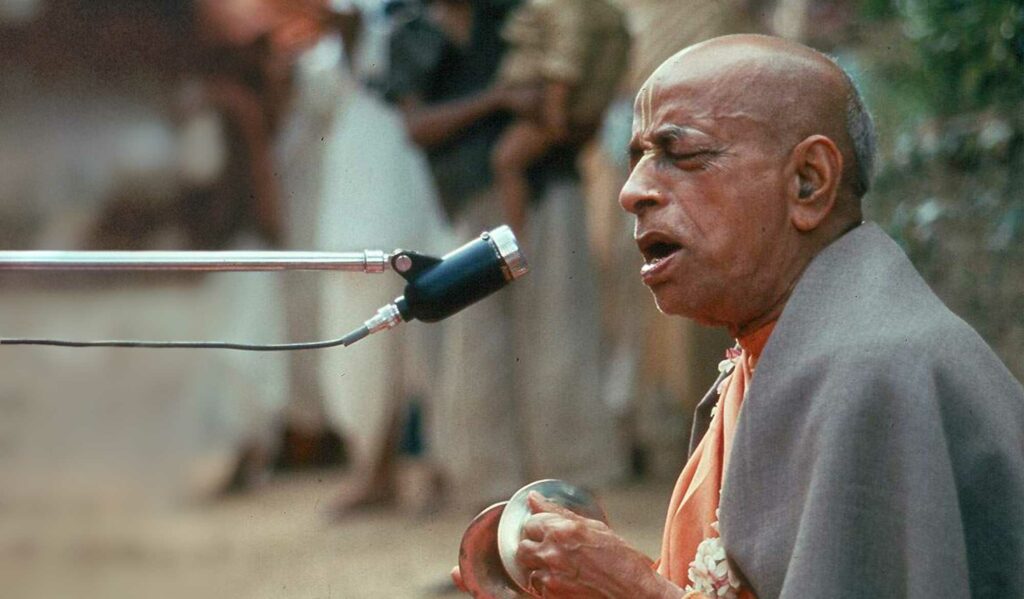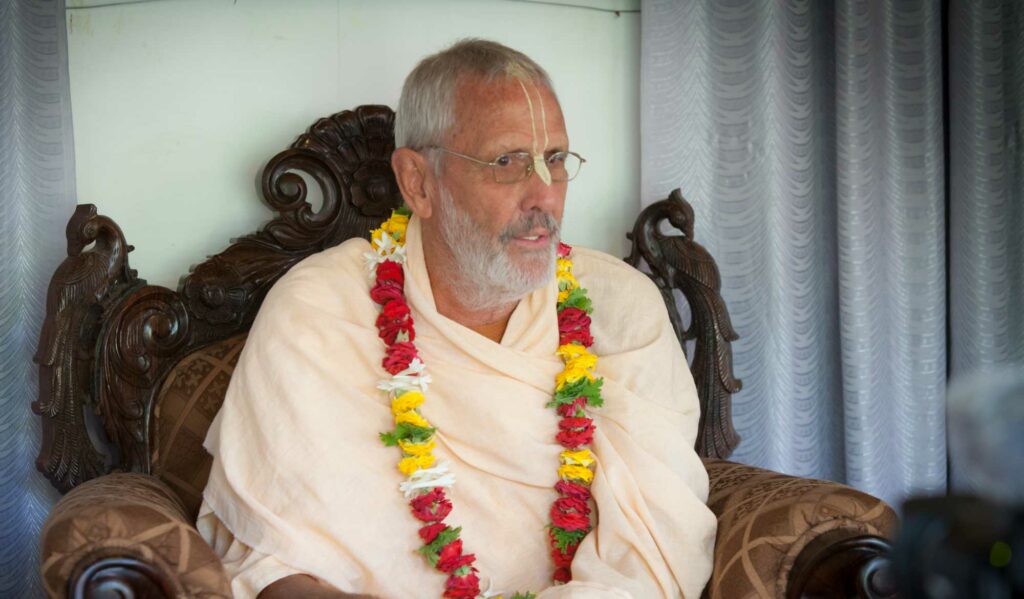Overview
What truly constitutes the guru's legacy? Gaura Gopāla Dāsa explores this question and delves into the significance of the guru's teachings beyond the bricks and mortar that make up his āśramas and temples.
Dealing with the Guru’s Assets
If we wish to show our love and faith for our spiritual master, it will be by following these teachings. However, rather than giving full attention to the desires of the spiritual master, we may focus on serving his body or the extensions of his body represented by temples and āśramas. If we do so, we will never be free of the pitfall of seeing the guru in purely human terms (martyasād-dhīḥ). The Lord can only be seen through the path of transcendental sound (śrutekṣita-pathaḥ) and the spiritual master, being His manifest representative, is also perceptible through divine sound vibrations.” (Śrīla B.P. Puri Mahārāja, ‘Of Love and Separation’)
As Vaiṣṇavas, despite hearing and discussing the ideal of detachment from the results of action, we still find ourselves mired in it in so many ways. Finding the balance when it comes to the external results of service, especially to our guru, necessitates knowing when to hold on and when to let go. On one hand we must deal carefully with the financial and material resources that we feel belong to guru and Kṛṣṇa; at the same time we should not become overly attached to them, as they can very easily become insurmountable obstacles in our soul’s search for truth and reality.
Mahāprabhu Himself said:
na dhanaṁ na janaṁ na sundarīṁ
kavitāṁ vā jagad-īśa kāmaye
mama janmani janmanīśvare
bhavatād bhaktir ahaitukī tvayi
O Lord of the universe, I do not desire wealth, followers, beautiful women nor great praise. Birth after birth I only wish to have unmotivated bhakti unto You, O Lord. (Śikṣāṣṭaka 4)
What is the Guru’s Legacy?
It is easy to lose touch with this simple prayer of Mahāprabhu when it comes to the land, money, āśramas and temples of the guru. One can mistake these as his ‘legacy’ thinking that this is what he came to give and what we must spend our life’s energy preserving. As we know from the most fundamental teachings of Kṛṣṇa Himself, these are all lost in time. There is no living principle in a building. The real truth is passed from one pure heart to another and carried through generations of gurus and disciples. This ‘truth’ is the dynamic living principle of spiritual life. It is a participatory event, where one must engage with the vāṇī of the guru and come to a heartfelt realisation of its essence. What is all this endeavour for? Why have I come to this path of Kṛṣṇa consciousness? What does Kṛṣṇa in the form of the guru-tattva want from any of us? Would the guru be happy to see his mission with its many assets destroyed in his absence? Certainly not. At the same time would he be happy to see his disciples fighting over who will manage the assets or be in charge after his disappearance? Also no. Following in the footsteps of one’s own guru, it is up to the disciple to discern what will help most in the development of a heartfelt serving attitude in connection to guru and Kṛṣṇa. We are to become guru-dāsa, vaiṣṇava-dāsa and kṛṣṇa-dāsa, everything else is supposed to help in that endeavour.
The actual legacy of the guru always comes in the form of the Absolute Truth which cannot be burned by fire, smashed with a hammer or worn away with water, much like the everlasting jīva soul. The one element that can wear away the teachings of the guru is time. Time and forgetfulness are the two great enemies of the Eternal Truth which is why Kṛṣṇa and His representatives are constantly coming to revive and reinstate it.
śrī bhagavān uvāca
imaṁ vivasvate yogaṁ proktavān aham avyayam
vivasvān manave prāha manur ikṣvākave ‘bravīt
evaṁ paramparā-prāptam imaṁ rājarṣayo viduḥ
sa kāleneha mahatā yogo naṣṭaḥ parantapa
Bhagavān Śrī Kṛṣṇa said: I disclosed this imperishable knowledge of yoga unto Vivasvān, the sun-god. He then taught it to Vaivasvata Manu, who then instructed the same knowledge to Ikṣvāku. In this way, O conqueror of the enemy, the pious rulers understood this path of knowledge through the disciplic succession. However, this knowledge of yoga has been lost due to the influence of time. (Bhagavad-gītā 4.1-2)
Śrīla Śrīdhara Deva Gosvāmī further explains this point:
In Gīta, Kṛṣṇa says to Arjuna that, “First I told these things to Sūrya, and then he spoke it to Manu. Due to kāla-dharma (the nature of time) it was mutilated and almost vanished. Now again I am speaking it to you. I am rejuvenating that karma-yoga.”
When the truth comes, it is bright at first, but gradually with the contact of this enervating plane, it becomes weak, disfigured, demoralised, and then again the Lord appears to rejuvenate it from time to time. The Lord feels the necessity of coming – yadā yadā hi dharmasya (Bhagavad-gītā 4.7). Sometimes He Himself comes, and sometimes He sends His own man, “Go and set right everything there!” In some modified way it continues and then it dwindles in course of time. And when again it is necessary, again He comes, and gives it a fresh push, with new colour. Then again it continues for some time. In this way it goes on.
The fact is that nothing is meant to last in this world. In the vast scope of material time and space, every temple, āśrama and sacred place will be destroyed. What Kṛṣṇa is referring to in the above verses is the knowledge of ultimate reality. This is what He comes to revive age after age.
With this vision, we can gain a better perspective of the assets that the guru utilises for His service and for spreading the teachings of Kṛṣṇa and Mahāprabhu far and wide. As long as they serve their primary function for which they were acquired or created, then they can be useful in the service of Kṛṣṇa, but as soon they become mired in politics, litigation, or become a distraction from the actual search for truth, then it’s time to leave them behind and march on. As Śrīla Śrīdhara Mahārāja was fond of saying, “God overhead, heart within – march on!”.
Acyutānanda Dāsa, one of the first disciples of Śrīla Prabhupāda, wrote the following in a letter to The Gauḍīya in 1994:
I was present (at 26-2nd Ave.) when Śrīla Prabhupāda received the documents that certified ISKCON as a registered, tax-exempt society. “We are not attached to any organisation,” he said. “It is an instrument we will use and if it becomes troublesome we will dissolve it and go on chanting Hare Kṛṣṇa.”
Bricks or Books?
Our lifespans in Kali-yuga are extraordinarily short and we have no time to waste. If we only see the guru’s contributions as bricks and mortar then we’ve missed the point and will not be able to see him as anything more than a construction worker who laboured hard to acquire some land and make some buildings for our benefit. As Śrila Bhaktisiddhānta Sarasvatī Ṭhākura once said, “We did not come to this world to become carpenters and brick-layers – we are only messengers of Mahāprabhu’s teachings in this world.” Śrīla Prabhupāda heard a similar statement from him at Rādhā-kuṇḍa in 1935:
When we were living in a rented house, if we could collect two hundred or three hundred rupees we were living very nicely at Ultadanga. We were happier then. But since we have been given this marble palace in Bagh Bazaar, there is friction between our men. Who will occupy this room? Who will occupy that room? Who will be the proprietor of this room? Everyone is planning in different ways. It would be better to take the marble from the walls and secure money. If I could do this and print books, that would be better.
However, as Śrīla Bhaktisiddhānta and his disciples knew well, books are only a passive conduit for transcendental knowledge. In and of themselves they are not able to awaken love of God in the heart of the jīva. When my Guru Mahārāja (Śrila B.G. Narasiṅgha Mahārāja) spoke on this point, he explained it even further.
When speaking of Śrīla Prabhupāda, we sometimes hear the quote of Bhaktivinoda Ṭhākura – “When thou art living still in sound,” or that, “Śrīla Prabhupāda is living in his instructions” but this doesn’t simply mean that he’s living in so many gigabytes in the Bhaktivedānta Vedabase or that he is living in the pages of the beautifully hardbound books adorning our bookshelves.
If we want to experience that Śrīla Prabhupāda is non-different from his instructions, then we must embrace the conception of Śrī Caitanya Mahāprabhu. We cannot live without that conception and simply honour him in the form of books, folios, marble mūrtis and so forth. We will have to join him by joining in with that conception.
Ultimately this will be what matters most. Are we able to perceive our guru through sound? Are we living and breathing the most important teachings that he came to give, or have we become entangled in the relative aspects of his contribution? We must see the energy of Kṛṣṇa flowing through the entirety of guru-tattva and especially in the teachings of our own guru. This will help us most in our journey towards that infinite Absolute Truth. The truth wants to be found! It cannot be captured in the four walls of a temple, or even between the covers of a book if the writer is not a transparent medium for the truth, or if the reader is not receptive. Ultimately, the highest truth is transferred from one heart to another through the connection of divine service.
Related Articles and Books
- 📖 The Authorized Sri Caitanya Saraswata Parampara (Book)
- 📖 Prabhupāda Vijaya (Book)
- 📖 Prākṛta-rasa Āraṇya Chedinī – Cutting the Jungle of Misconception (Book)
- Society Consciousness vs. Kṛṣṇa Consciousness by Śrīla B.G. Narasiṅgha Mahārāja
- There is Only One Society! by Gaura Gopāla Dāsa
- Beyond Bricks and Mortar: Understanding the Guru’s Legacy by Gaura Gopāla Dāsa
Further Reading
Pilgrimage with Swami Narasiṅgha – Part 7: Keśī Ghāṭa
Continuing with our pilgrimage series, this week Śrīla Narasiṅgha Mahārāja takes us to Keśī Ghāṭā where he tells us about Madhumaṅgala’s meeting with the Keśī demon, what Keśī represents, and how Śrīla Prabhupāda almost acquired Keśī Ghāṭa. Mahārāja also narrates his own experience. This article has been adapted from a number of talks and articles by Narasiṅgha Mahārāja.
Prema Dhāma Deva Stotram with the Narasiṅgha Sevaka Commentary – Verses 61-65
In verses 61 to 65 of 'Prema Dhāma Deva Stotram', Śrīla Śrīdhara Mahārāja narrates the pastime of Śrī Caitanya at Caṭaka Parvata In Purī and explains how the scriptures produced by Brahmā and Śiva are ultimately searching for the personality of Mahāprabhu who is merciful too all jīvas, no matter what their social position.
Prabhupāda Śrīla Sarasvatī Ṭhākura’s Visit to Ayodhyā
With the forthcoming observance of Śrī Rāma Navamī, we present 'Prabhupāda Śrīla Sarasvatī Ṭhākura’s Visit to Ayodhyā' written by Śrīla Bhaktisiddhānta Sarasvatī Ṭhākura Prabhupāda from The Gaudīyā magazine, Vol 3. Issue 21/ In December 1924, after visiting Benares and Prāyāga, Sarasvatī Ṭhākura visited the birth-site of Śrī Rāmācandra in Ayodhyā.
Śaraṇāgati – The Only Path to Auspiciousness
In this article, 'Śaraṇāgati - The Only Path to Auspiciousness', Dhīra Lalitā Dāsī analyses the process of śaraṇāgati (surrender) beginning with śraddhā (faith). She also discusses the role of śāstra and the Vaiṣṇava in connection with surrender.
Pilgrimage with Swami Narasiṅgha – Part 7: Keśī Ghāṭa
Continuing with our pilgrimage series, this week Śrīla Narasiṅgha Mahārāja takes us to Keśī Ghāṭā where he tells us about Madhumaṅgala’s meeting with the Keśī demon, what Keśī represents, and how Śrīla Prabhupāda almost acquired Keśī Ghāṭa. Mahārāja also narrates his own experience. This article has been adapted from a number of talks and articles by Narasiṅgha Mahārāja.
Prema Dhāma Deva Stotram with the Narasiṅgha Sevaka Commentary – Verses 61-65
In verses 61 to 65 of 'Prema Dhāma Deva Stotram', Śrīla Śrīdhara Mahārāja narrates the pastime of Śrī Caitanya at Caṭaka Parvata In Purī and explains how the scriptures produced by Brahmā and Śiva are ultimately searching for the personality of Mahāprabhu who is merciful too all jīvas, no matter what their social position.
Prabhupāda Śrīla Sarasvatī Ṭhākura’s Visit to Ayodhyā
With the forthcoming observance of Śrī Rāma Navamī, we present 'Prabhupāda Śrīla Sarasvatī Ṭhākura’s Visit to Ayodhyā' written by Śrīla Bhaktisiddhānta Sarasvatī Ṭhākura Prabhupāda from The Gaudīyā magazine, Vol 3. Issue 21/ In December 1924, after visiting Benares and Prāyāga, Sarasvatī Ṭhākura visited the birth-site of Śrī Rāmācandra in Ayodhyā.
Śaraṇāgati – The Only Path to Auspiciousness
In this article, 'Śaraṇāgati - The Only Path to Auspiciousness', Dhīra Lalitā Dāsī analyses the process of śaraṇāgati (surrender) beginning with śraddhā (faith). She also discusses the role of śāstra and the Vaiṣṇava in connection with surrender.








